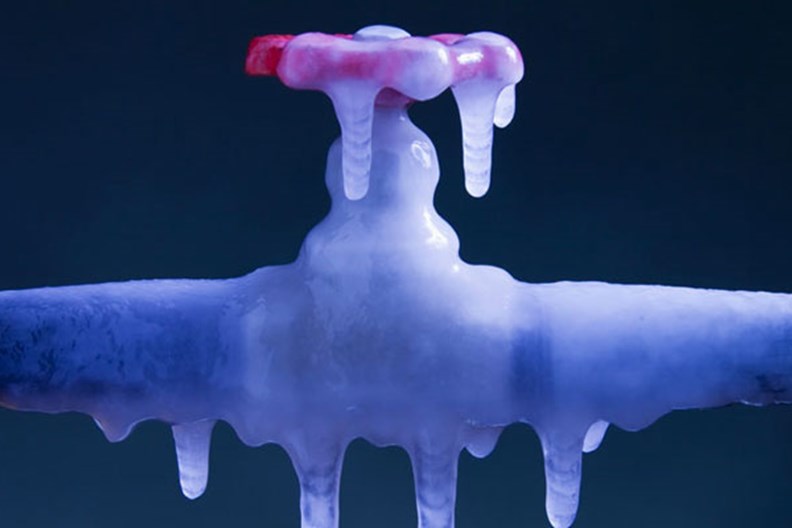For the external parts of your property, consider:
- Implement slip-related safety measures, such as gritting or diversion to less slippery walkways. Don’t forget that hard floors in entrance areas can become very slippery during wet or snowy weather
- Assess the exterior lighting around your premises; with less hours of daylight, it may be harder for people visiting you to see icy and other slippery areas
Watch out for frozen pipes
Tell-tale signs of a frozen pipe include no water coming from the tap, frost or ice on the outside of the pipe and if the pipe appears to be bulging.
However, a frozen pipe doesn’t necessarily mean a disaster, if you act quickly enough. If you discover a water pipe which is frozen but has not burst, take the following steps to prevent it from bursting and protect your possessions:
- Turn off the stopcock
- Remove any furniture or equipment in the area which may get damaged by any leaking or escaping water, where safe and practical to do so
- Open the tap closest to the area and begin gently warming the pipe with a hairdryer or hot water bottle, starting from the end closest to the tap and working away from the faucet
Don’t forget any outdoor taps – it may be worth insulating these to prevent water from freezing inside the cavity wall and causing an escape of water.
Although pipes are inevitably damaged when they freeze, it’s only possible to see bursts when the pipe begins to thaw. If it is apparent that a pipe in your property has burst, you should:
- Turn off the stopcock and drain the system by opening taps
- Switch off your heating and, if in doubt, your electricity at the mains
- Contact your plumber immediately
If possible, once the leak has been fixed, make sure you air the affected parts of the property by leaving windows and doors open.


